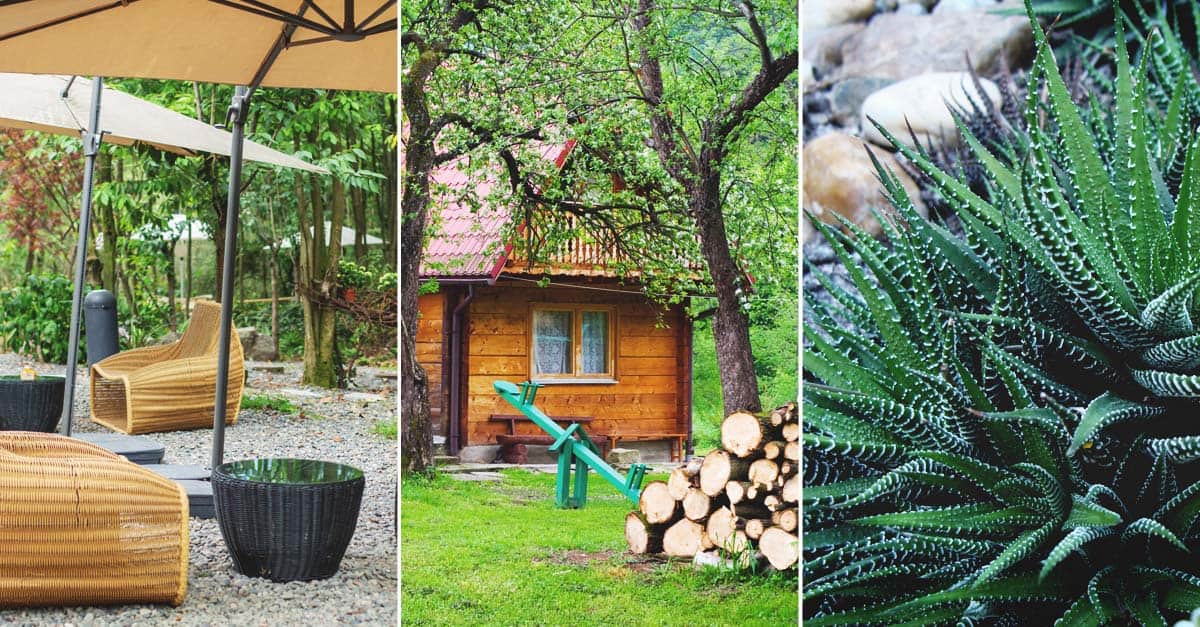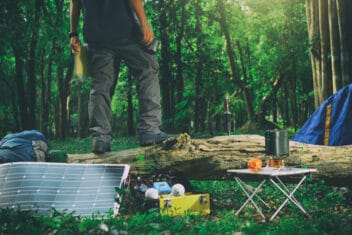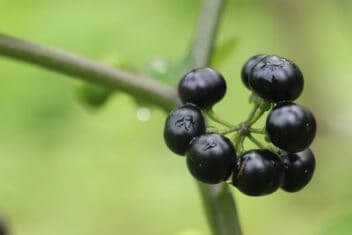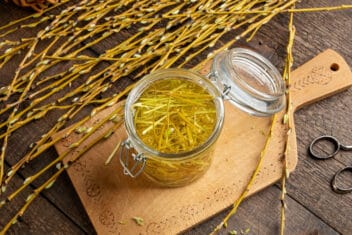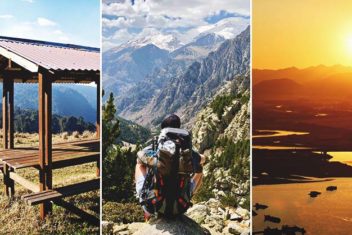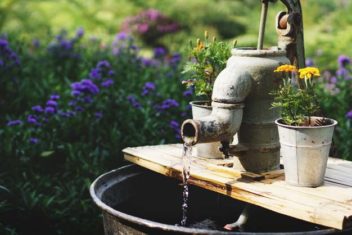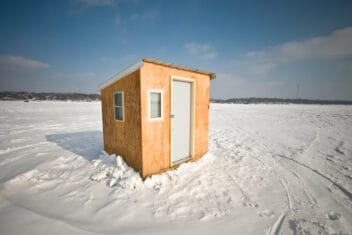I know we all had a good laugh over the idea of raking forests to prevent fires. My favorite spoof of that gross understatement of what it takes to prevent fires was the woman who took a video of herself vacuuming up her forest floor.
Unfortunately, the reality of an uncontrolled fire is no joking matter. They can devastate lives, homes, and entire ecosystems. Out of control fires are also becoming more common as we face new weather extremes like record-breaking droughts, winds, and heat.
I’ll warn you in advance, no fire risk management approach discussed in this post will stop a mega-fire such as those raging in Northern California as I write. However, the more each of us does to restore the ecological balance in our landscapes to prevent fires from happening on our own properties, and to minimize the risk of fire spreading — the better it is for all of us.
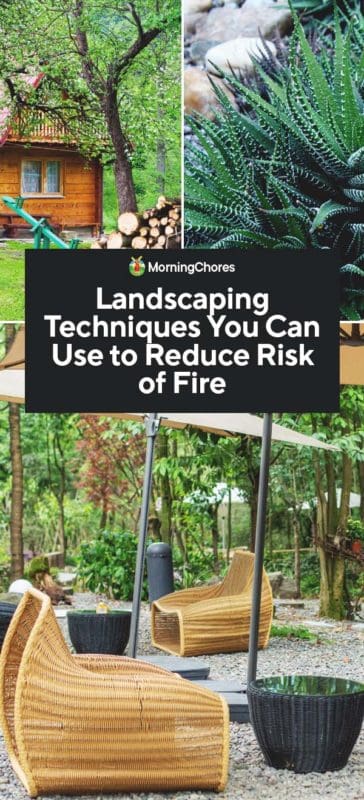
Landscaping Techniques for Fire Risk Management
Fires require fuel to burn. If you’ve ever tried to start a fire with uncured or unseasoned wood without an accelerant, then you know exactly how hard it is. That premise can be an asset to your landscapes.
Here are some ideas to help make your landscape a fire fuel-free zone.
1. Dried Debris Free
When it comes to cutting your risk for fire, little things matter big time. Even dried leaves in your gutter could be the thing that sparks a house fire. A stray ember blows into the gutter, finds that dried fuel source, and ignites. It then moves to the wood of your eaves, then your roof, soon your whole house is ablaze.
Maintaining a debris-free zone around the perimeter of your house is an easy way to reduce your risks. If your gutters accumulate leaves, clean them often during dry weather. During droughts, rake up any dried leaf litter in your yard, shred it, and add it to your compost pile as a brown.
Also, if you have any trees, shrubs, or plants that have died due to extended drought, pull those. If you have a chipper, use them to make mulch. If not, consider using them to make a hügelkultur that will hold more moisture in the soil during dry periods.
2. Fire Safe Outdoor Living
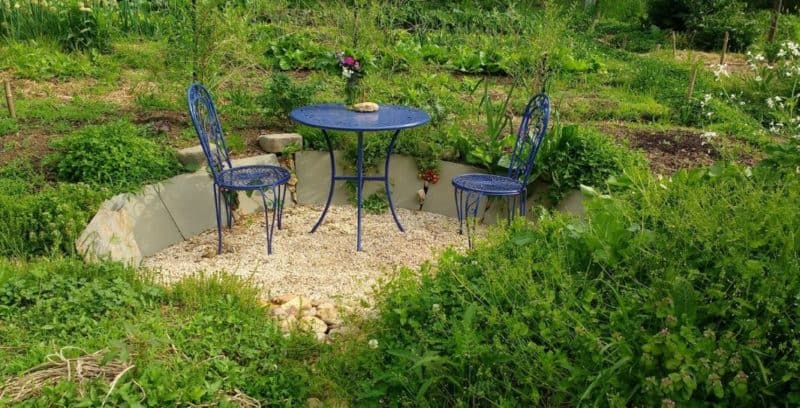
Wooden decks and patio furniture are also great fuel sources for fires. In drought areas, opt for decking materials that are fire-resistant. If you have an existing wooden deck, install a sprinkler system to saturate your deck during high fire risk periods.
– Furniture
When choosing furniture for your outdoor living area, opt for fire-resistant materials. If you have wood furniture, consider applying a fire-retardant stain as suggested by the stain manufacturer. Alternatively, be ready to hose down your outdoor furniture when fire risks are high.
– Accessories
Outdoor pillows, rugs, and other fabric decorative items can also increase your fire risks. Fortunately, manufacturers do make fire-retardant pillows, cushions, curtains, and more. That way you can still express your personal style without increasing your fire risk.
Safe Storage Practices
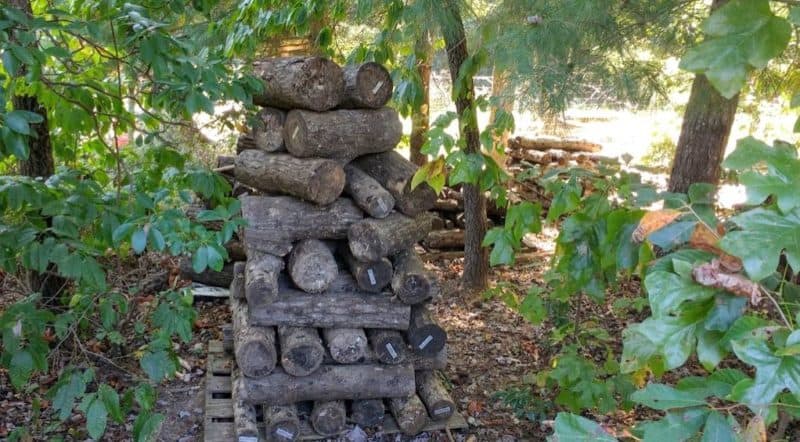
A lot of homesteaders use wood for stoves and home heating. Though it can be convenient to store your firewood right around your house, it’s also a serious safety hazard. That perfectly seasoned, high BTU hardwood you spent two years curing is primed to burn.
Keep your extra cords well away from your house in a stand-alone firewood shed. Then, just bring in logs as you need them.
Or if you must keep some wood near your house, think about covering it with a fire-retardant tarp. Also, if you use propane or natural gas, keep back-up containers away from your house until you need them.
1. Compost and Livestock Storage
Gardeners also store browns such as newspapers and dried leaves to use in compost. We may keep hay and straw for livestock use.
These things can be highly flammable. Store them in a location away from your home. Don’t store them near fire risks such as grills or bonfire pits either.
2. Mushroom Logs
If you happen to grow shiitake on logs, those too can become a fire hazard if your logs aren’t kept moist.
3. Homestead Structures
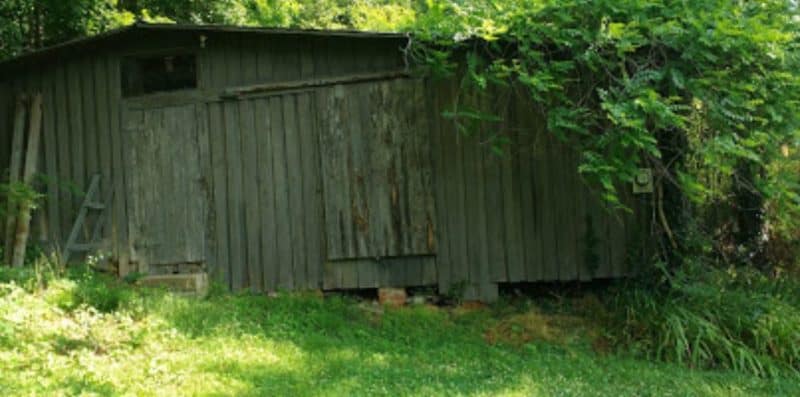
Homesteaders also tend to have a lot of structures incorporated into our landscapes. We may have duck houses, chicken coops, goat barns, potting sheds, workshops, root cellars, and more. If these are not built to be fire-resistant, then they can be potential fire kindling too.
Site your homestead structures at least 100 feet from your house when possible. Opt for fire-retardant roofing and siding to protect wood framing. Also, apply the debris-free principle to outbuildings as you do to your home area.
Fire Resistant Planting
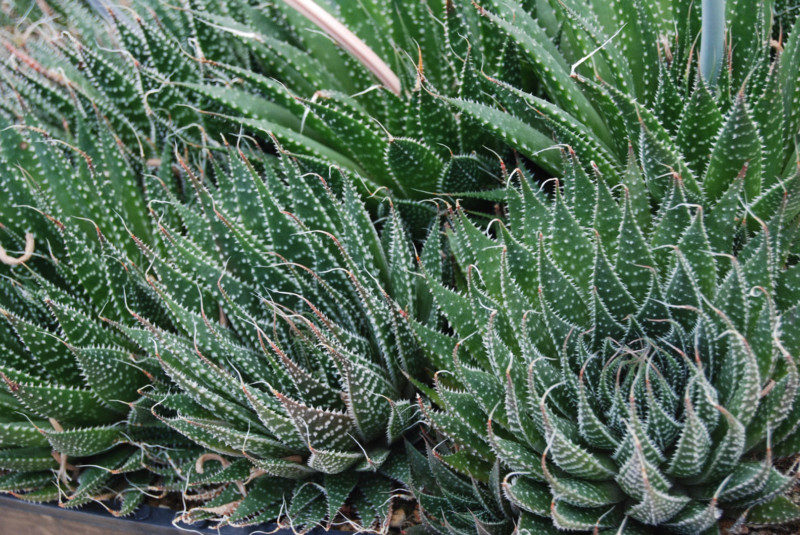
Believe it or not, there are plenty of plants that have natural fire resistance. There are also plants more prone to burning. Protect your property perimeter by planting wisely.
1. Fire Resistant Plants
Experts recommend that you use all fire-resistant plants within 30 feet of your home. Fortunately, there are plenty of fire-resistant plants that are also often helpful on the homestead.
Things like hops, grapevines, and perennial ryegrass are good options. Herbs such as lavender, chives, and sage also work. Pollinator-friendly plants like coreopsis, gaillardia, and echinacea are also excellent choices.
The key to using fire-resistant plants as protection around your house is to make sure those plants get sufficient water. If you live in drought-prone areas, then you’ll want to stick to things like sedums and succulents that can store water in their leaves.
2. Fire Prone Plants
There are also some plants that are prone to fire risks. Evergreens like Arborvitae and Cypress are prone to having dead leaves and branches hiding beneath their green exterior. Some clumping grasses hold tight to their dead leaves too.
That dry matter is fire fuel waiting to happen. Any plant that can’t be easily pruned to clear out dead leaves, needles, branches, or stems should be kept away from your home.
3. Proper Plant Care and Maintenance
Even when you choose plants with good fire resistance, they still need proper care to minimize risks.
Plants like lavender are only good as a fire-resistant herb if they are pruned for flower production. This keeps them from becoming woody. If left unpruned though, lavender could quickly become a fire hazard rather than a drought-tolerant and fire-resistant plant.
Water your landscape regularly, especially during dry times. Use proper plant spacing so that plants stay healthy and don’t fight for water. Drip irrigation can help limit water use while also keeping plants sap and water-saturated.
Use ground cover plants like clover, strawberries, or low growing herbs to keep soil from drying too quickly. Or, apply mulch to hold water in the soil.
4. Mulch Maintenance
On the subject of mulch, I am a huge advocate for using wood mulch in the garden, particularly under fruit trees and other perennials. However, if it gets too dry, it can also be a fire hazard.
Make sure your mulch stays moist, particularly during drought periods. If you live in a drought-prone area, then rock mulch might be a better option.
Rocks can be a bit difficult to garden in. Yet, they do help hold moisture in the soil and won’t burn. That makes them a good choice in fire-prone regions, especially under perennials.
5. Vegetative Maintenance
It’s pretty easy to apply fire risk management of the landscape directly around your home. However, many homesteaders have extended acreage to manage.
It can be difficult to apply proper care to all your plants on a large scale. That’s where livestock can help.
Goats are great for clearing brush and to control plant spacing in larger wooded areas. They eat young saplings that would be starved of light and water by larger trees. They also eat dried leaves as roughage.
In fact, during a recent California fire, goats were used to clear brush and helped save the Reagan Library and all those books from becoming fire kindling.
Permaculture Practices
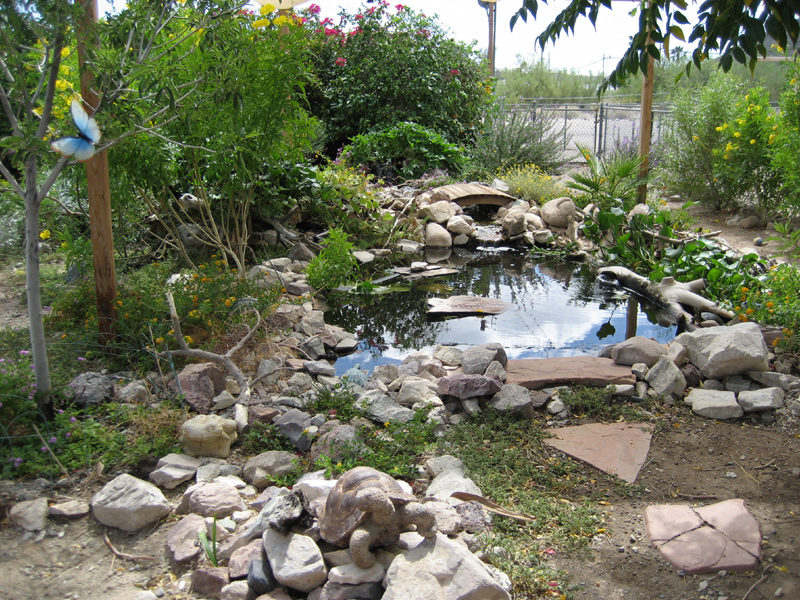
There are also a lot of permaculture practices you can use to help sink and store water in your landscape. The strategic use of ponds, swales, rain gardens, plant guilds, and more can capture the rain when it falls, preserve it through drought, and make your landscape more fire-resistant.
If you live in a drought-prone area, I highly recommend you take a look at Sepp Holzer’s book, Desert or Paradise: Restoring Endangered Landscapes Using Water Management, Including Lake and Pond Construction. It’s full of practical ways you can re-shape your landscape to make it more hydrologically balanced.
Also, look up the Greening the Desert Project in Jordan. It’s an incredible testimony to what soil restoration and proper planting can do to hold water in the land even in extremely dry areas.
Fire Resistant Living
Your landscape is your first line of defense to protect your home from fires that start outside your property. However, sometimes the risk starts in our own backyards. Activities like burning trash in rural areas, making biochar, open fire cooking, and more can all raise your risk level.
If you burn anything in your landscape, do so with extreme caution. Have your hose handy for accidents. Or keep sand or a fire extinguisher ready to suffocate flames.
Keep fire risk management always in mind and use outdoor grills, fire pits, burn piles, etc. only when conditions are ideal such as low wind, high humidity, and a recently rained on landscape. Don’t leave fires unattended. And, obviously, only start fires in locations well away from your home (or your neighbors) so you don’t create unnecessary risks.
Conclusion
Fire risks are real and the consequences can be utterly devastating. We all need to protect ourselves and each other as best as we can. Apply fire risk management and use your landscape wisely to minimize risks to you and others.
